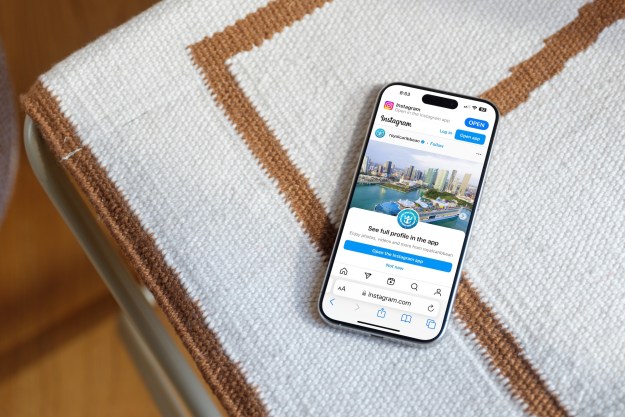Check out our full review of the LG Optimus G Pro cell phone.
Mobile World Congress may be the launchpad for the global version of the LG Optimus G Pro, but it feels like we already know it intimately. Though there were a lot of new LG devices on display, we couldn’t help but spend most of our time with the G Pro.
At the risk of stating the obvious, the Optimus G Pro is big, and every bit of its 5.5-inch screen is felt when you pick it up. It feels solid in the hand, and amazingly shaves about 20 grams off the weight of competing devices like the Samsung Galaxy Note 2 and even the Nokia Lumia 920’s overall weight. The back has the same spangly finish as the Nexus 4, and looked great against the white chassis. There was no flex to worry about, although the buttons on the side are made of plastic and have an unpleasant, cheap click to them, not unlike most Samsung products.


LG may have skimped a little with the buttons and building materials, but it certainly hasn’t done so with the screen, as its 1080p resolution looks fabulous. The demo videos were beautifully crisp and the 400ppi pixel density produces such detail and sharpness, it makes us want a similarly high-res display on every other mobile device we own.
LG’s new features are a mixed bag
Android 4.1.2 is installed along with LG’s own user interface, although there isn’t much to separate it and Samsung’s TouchWiz, with the pair sharing similar icons, transitions, and animations. They’re not twins, but would certainly be considered close relatives. Like Samsung, LG uses custom apps baked into the OS to differentiate itself from others, some of which look useful and others bizarre.

On the helpful side we’ve got QMemo, which turns the screen into a notepad and you use your finger to trace out notes. The handwriting recognition is good, but it needs some concentration to “write” neatly, as jotting anything at speed results in massive, scrawled letters on the screen. QMemo can be accessed through the notification center, but it’s at its best when assigned to the QButton on the side of the device. This shortcut key means QMemo is a single, simple click away when on a call, a time when you’d you’re likely to need it most.
So, QMemo (and the QButton) are additions we could see ourselves using. (The Q button can be used as a shutter button, as well.) Dual Recording on the other hand, isn’t. It records a video using both front and rear cameras at the same time, with the forward-facing cam’s picture (containing your face) appearing in a little picture-in-picture box. Even LG struggled to give a good reason for its existence, saying it would be helpful in business meetings, but not elaborating any further. During playback, the extra window is distracting and detracts from what’s presumably the focus of the video – recorded using the rear camera – making Dual Recording feel like a feature produced purely because it could be done, rather than fulfilling a need.
(Editor’s note by Jeff: While I agree with Andy that no one needs dual-sided recording, the feature could come in handy in select circumstances and LG implemented it in an impressively polished way.)

The list of LG’s custom apps continues in a similar vein. A collaboration tool for sharing screens and content, the option to display three apps at the same time, and the now obligatory universal remote (named, you’ve guessed it, QRemote) are among the best ideas shown.
Huge phone, gorgeous screen
Like all tablet/smartphone hybrid hardware, the overriding impression of the Optimus G Pro is it’s size. LG has made a few concessions in the OS to compensate, such as the ability to shift the keyboard and dialer over by a centimeter or so to make one-handed use a more viable prospect; but the fact remains any mobile device with a screen this big won’t be for everyone. The daintily-handed could find it awkward (although this is hardly unique to the Optimus G Pro), and should try before buying. For all those already convinced this is the form-factor for them, the few missteps here aren’t enough to eclipse the gorgeous screen and LG’s mostly value-adding apps.
(Photos by Ben Nelson, Envision Studio)
Editors' Recommendations
- The Oppo Reno4 Pro 5G is technologically tempting, but struggles with pricing
- Oppo Find X2 Pro hands-on review: A leather-clad stunner
- Mobvoi’s new TicWatch Pro 4G/LTE smartwatch lasts 2 to 30 days with a catch
- LG’s V50 ThinQ is a different take on the folding phone, and it supports 5G
- The modern-looking Axon 10 Pro 5G is ZTE’s first 5G-ready smartphone





